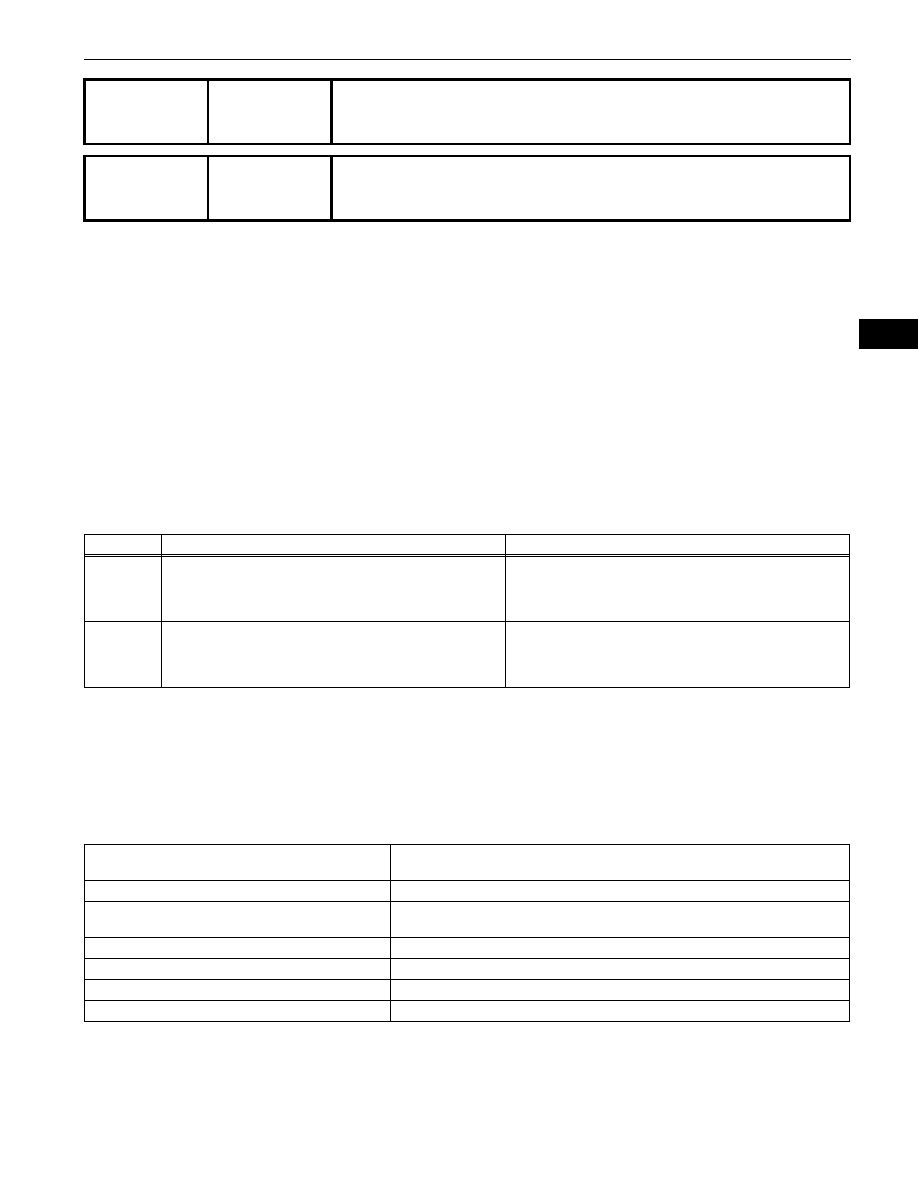Toyota FJ Cruiser (GSJ 10, 15 series). Instruction - part 65

1GR-FE ENGINE CONTROL SYSTEM – SFI SYSTEM
ES–215
ES
MONITOR DESCRIPTION
The ECM uses sensors mounted in front of and behind the Three-Way Catalytic Converter (TWC) to
monitor its efficiency.
The first sensor, the Air-Fuel Ratio (A/F) sensor, sends pre-catalyst information to the ECM. The second
sensor, the Heated Oxygen (HO2) sensor, sends post-catalyst information to the ECM.
In order to detect any deterioration in the TWC, the ECM calculates the Oxygen Storage Capacity (OSC)
of the TWC. This calculation is based on the voltage output of the HO2 sensor while performing active air-
fuel ratio control, rather than the conventional detecting method, which uses the locus ratio.
The OSC value is an indication of the oxygen storage capacity of the TWC. When the vehicle is being
driven with a warm engine, active air-fuel ratio control is performed for approximately 15 to 20 seconds.
When it is performed, the ECM deliberately sets the air-fuel ratio to lean or rich levels. If a rich-lean cycle
of the HO2 sensor is long, the OSC becomes greater. There is a direct correlation between the OSCs of
the HO2 sensor and the TWC.
The ECM uses the OSC value to determine the state of the TWC. If any deterioration has occurred, it
illuminates the MIL and sets a DTC.
HINT:
•
Bank 1 refers to the bank that includes cylinder No. 1.
•
Bank 2 refers to the bank that does not include cylinder No. 1.
•
Sensor 1 refers to the sensor closest to the engine assembly.
•
Sensor 2 refers to the sensor farthest away from the engine assembly.
MONITOR STRATEGY
DTC
P0420
Catalyst System Efficiency Below Threshold
(Bank 1)
DTC
P0430
Catalyst System Efficiency Below Threshold
(Bank 2)
DTC No.
DTC Detection Conditions
Trouble Areas
P0420
OSC value smaller than standard value under active air-fuel
ratio control (2 trip detection logic)
•
Gas leakage from exhaust system
•
A/F sensor (bank 1 sensor 1)
•
HO2 sensor (bank 1 sensor 2)
•
Exhaust manifold (TWC)
P0430
OSC value smaller than standard value under active air-fuel
ratio control (2 trip detection logic)
•
Gas leakage from exhaust system
•
A/F sensor (bank 2 sensor 1)
•
HO2 sensor (bank 2 sensor 2)
•
Exhaust manifold (TWC)
Related DTCs
P0420: Catalyst Deterioration
P0430: Catalyst Deterioration
Required Sensors/Components (Main)
A/F sensor and heated oxygen sensor
Required Sensors/Components (Related)
Intake air temperature sensor, mass air flow meter, crankshaft position sensor and
engine coolant temperature sensor
Frequency of Operation
Once per driving cycle
Duration
About 30 seconds
MIL Operation
2 driving cycles
Sequence of Operation
None